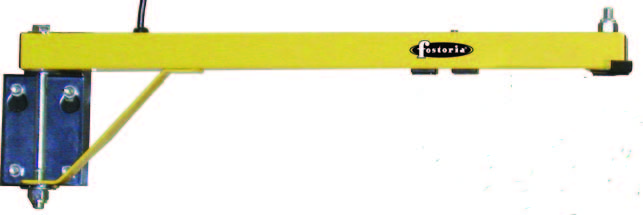I am finally pulling the trigger on building out a dedicated brew space and am working on the ventilation. Going full electric BIAB 5 gallon with maybe a separate 10 gallon option later. I think I have a good idea how I want the plumbing and electrical, but I am less sure about the ventilation.
I want to be able to use ratchet/pulley to raise and drain the grains so I am thinking how to combine that with a hood/vent. My idea is to have a "side pull" vent. See poor txt graphic below.
| |
| |
L<- Vapor
^ ^ ^
|...........|
|...........|
| Kettle |
|______|
That would leave the top open for the pulley system. What I am imagining is something similar to the vents on an "island cooktop" if you know what I mean. Those ones that pop up from the side and draw smoke and vapors from the range across to the side except build a larger one with decent flow (powering it with a 400CFM 6" duct fan).
What I was wondering was if anyone had any experience with this or had tried this. I have read many threads about building/piecing together various hoods, but have not seen anything like this.
On one level I think it should work to draw most of the vapor away at the point of origin, on a different level (please correct me if I am wrong here) I think people get way too fired up about water vapor from boil off. Many activities happen in your house all the time that put way more steam into the air than a 5 gallon (or even 10 gallon) brew session (e.g. 3-4 15min showers, a full day of home canning , etc.).
On another level, I feel that if venting is needed, why do I need it right at the source. The shower vent in our bathroom works well and is many feet from the shower (source). As long as I have adequate turnover of the air in the room, condensation or high humidity from a brew day should not be an issue.
Any basement brewery veterans (or anyone else ) please let me know your thoughts. I am at the "stud walls" phase so changing plans now is a lot easier than its going to be in a month or so.
) please let me know your thoughts. I am at the "stud walls" phase so changing plans now is a lot easier than its going to be in a month or so.
Thanks!
I want to be able to use ratchet/pulley to raise and drain the grains so I am thinking how to combine that with a hood/vent. My idea is to have a "side pull" vent. See poor txt graphic below.
| |
| |
L<- Vapor
^ ^ ^
|...........|
|...........|
| Kettle |
|______|
That would leave the top open for the pulley system. What I am imagining is something similar to the vents on an "island cooktop" if you know what I mean. Those ones that pop up from the side and draw smoke and vapors from the range across to the side except build a larger one with decent flow (powering it with a 400CFM 6" duct fan).
What I was wondering was if anyone had any experience with this or had tried this. I have read many threads about building/piecing together various hoods, but have not seen anything like this.
On one level I think it should work to draw most of the vapor away at the point of origin, on a different level (please correct me if I am wrong here) I think people get way too fired up about water vapor from boil off. Many activities happen in your house all the time that put way more steam into the air than a 5 gallon (or even 10 gallon) brew session (e.g. 3-4 15min showers, a full day of home canning , etc.).
On another level, I feel that if venting is needed, why do I need it right at the source. The shower vent in our bathroom works well and is many feet from the shower (source). As long as I have adequate turnover of the air in the room, condensation or high humidity from a brew day should not be an issue.
Any basement brewery veterans (or anyone else
Thanks!





